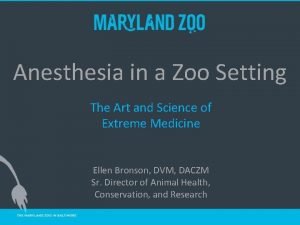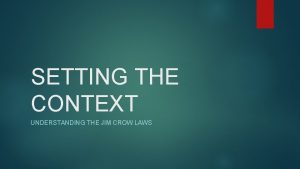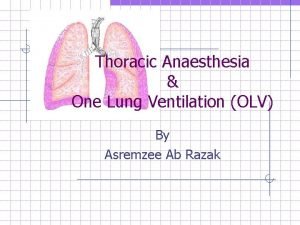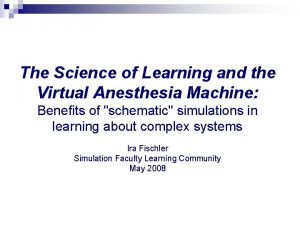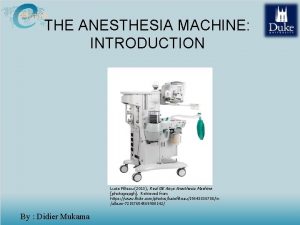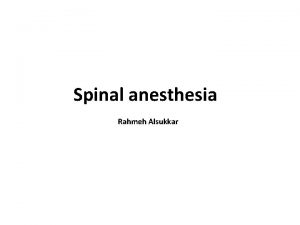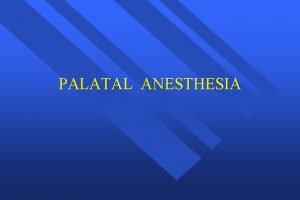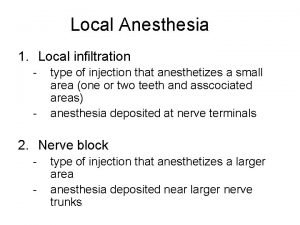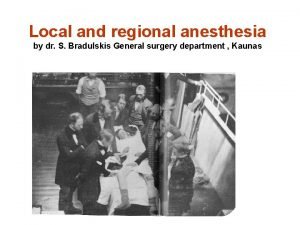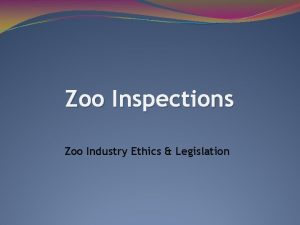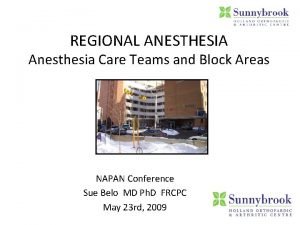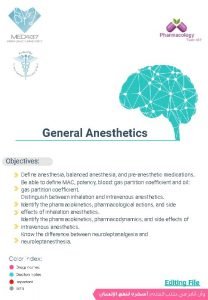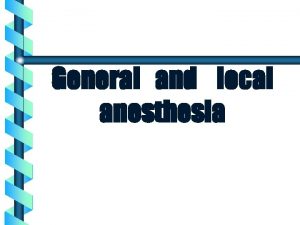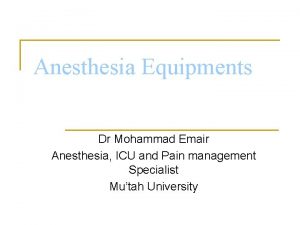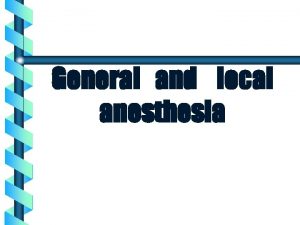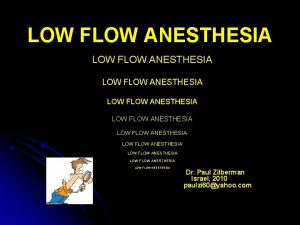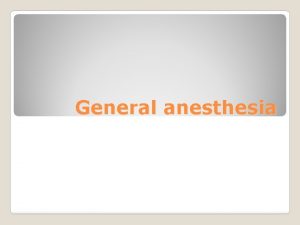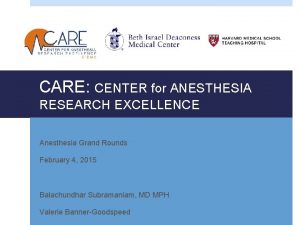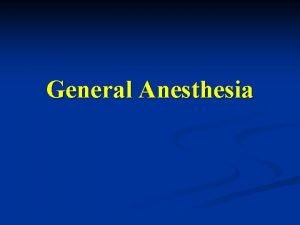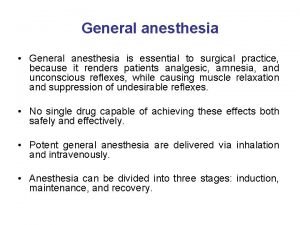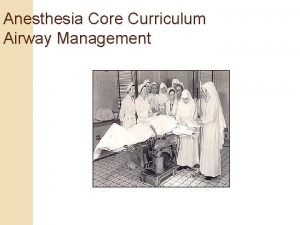Anesthesia in a Zoo Setting The Art and

























- Slides: 25

Anesthesia in a Zoo Setting The Art and Science of Extreme Medicine Ellen Bronson, DVM, DACZM Sr. Director of Animal Health, Conservation, and Research

The changing roles of zoos MENAGERIE Exhibition ZOOLOGICAL GARDEN Education and recreation CONSERVATION & RESEARCH CENTER

The changing roles of zoos • Elevation in standard of care & expectations – Public involvement, perception & scrutiny – Increased knowledge, resources, medical techniques – Focus on quality of life, genetics, natural behaviors

Evolution of zoo careers • Keeper: transition from “poop scooper” to animal trainer – BS or MS degree – expertise in animal husbandry, nutrition, reproduction, and behavior – Zoo internships

Evolution of zoo careers • Zoo/wildlife veterinarian – Small/large animal rotating internship (1 y) – Zoo specialty internship (1 y) – Zoo residency (3 y) – Publications (3 first author) – ACZM board certification – Entering the nonprofit/government world

Evolution of zoo careers • Veterinary Technicians: – Undergraduate degree – Licensing exam – Small/large animal experience – Zoo internship – Board specialization (eligible after 5 y experience)

Challenges of Zoo Medicine • Very little known about treatments, diagnostics, medication doses • No medications made or labeled for zoo species • Animals in zoos are living longer due to improved medical care

Challenges of Zoo Medicine • Animals tend to hide signs • Wide variations of anatomy, behavior, metabolism, size • Cannot examine most without anesthesia

Considerations for anesthesia Reasons for anesthesia: • • Routine examinations Animal transfers Emergency procedures Sick animal evaluation

Considerations for anesthesia Varies with each individual: • Size • Anatomy • Reaction to certain drugs • Dangerous animals • Temperament • Enclosure • Distance to animal • Conditioning • Training

Considerations for anesthesia • Before anesthesia: Restraint – Manual restraint • Nets • Tubes • Gloves

Considerations for anesthesia • Before anesthesia: Restraint – Hand-injections aids

Considerations for anesthesia • Remote injection – Plastic pressurized darts

Considerations for anesthesia • Remote injection – Blowpipes and gas-pressurized pumps – Dart rifles for field work

Induction and maintenance drugs • Differences to standard medicine: – Seldom able to give premed – Must be IM injection – Animal is typically not calm (higher doses needed) – All drugs used off-label and many compounded

Induction and maintenance drugs • Common drugs used: – Ketamine combos – Midazolam and other benzodiazepines – Alpha-agonists – Opioids (butorphanol/buprenorphine) • All used off-label

Induction and maintenance drugs • Ultra-potent opioids – Carfentanil – Etorphine – Thiafentanil • Concentrated formulas – Ketamine – Medetomidine – Midazolam • Reversal agents vital in many situations

Induction and maintenance drugs • Maintenance: – Iso/sevoflurane – CRI Ketamine/propofol

Not so common protocols • Birds – Iso/sevoflurane only – Fast induction and recovery • Reptiles – LONG induction and recovery • Aquatic species – Bath with tricaine methanesulfonate

Anesthetic monitoring The same, more or less…

Anesthetic monitoring The same, more or less… …. or even less!

Unique tools of the trade

Even more to think about….

In summary • Zoo medicine is constantly evolving field • One health approach • Anesthesia in exotics/zoo carries higher risks than other groups • Often modifying equipment to facilitate needs • Success depends on knowledge, creativity, team work

Thank you for your attention and interest!
 Nyob zoo sawv ntxov
Nyob zoo sawv ntxov Summary of zoo by edward hoch
Summary of zoo by edward hoch Art of zoo
Art of zoo Understanding jim crow (setting the setting)
Understanding jim crow (setting the setting) Hát kết hợp bộ gõ cơ thể
Hát kết hợp bộ gõ cơ thể Olv anesthesia
Olv anesthesia Virtual anesthesia machine
Virtual anesthesia machine Fail safe valve anesthesia
Fail safe valve anesthesia Yoke block anesthesia machine
Yoke block anesthesia machine Layers of spinal anesthesia
Layers of spinal anesthesia Pre anesthesia assessment form
Pre anesthesia assessment form Palatal anesthesia
Palatal anesthesia Lp html
Lp html Bổ thể
Bổ thể Supraperiosteal definition
Supraperiosteal definition Tỉ lệ cơ thể trẻ em
Tỉ lệ cơ thể trẻ em Gấu đi như thế nào
Gấu đi như thế nào Mechanism of local anesthesia
Mechanism of local anesthesia Local anesthesia
Local anesthesia Incisive nerve block
Incisive nerve block Site:slidetodoc.com
Site:slidetodoc.com Local anesthesia
Local anesthesia Chụp phim tư thế worms-breton
Chụp phim tư thế worms-breton Head tilt and chin lift
Head tilt and chin lift Classification of inhalational agents
Classification of inhalational agents Minimum alveolar concentration
Minimum alveolar concentration


